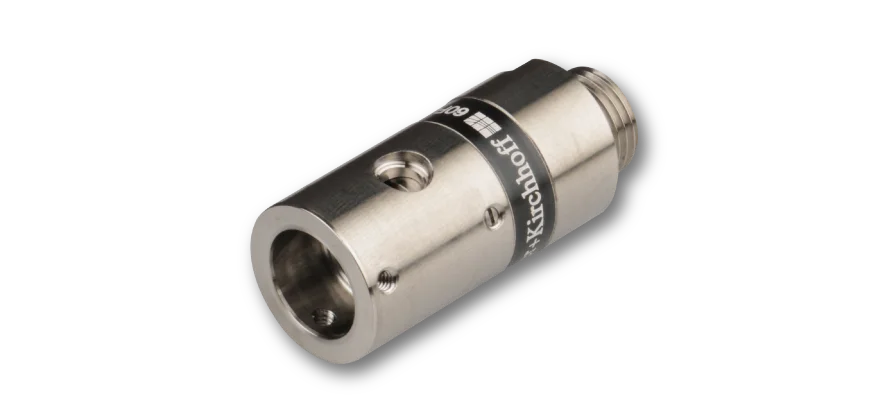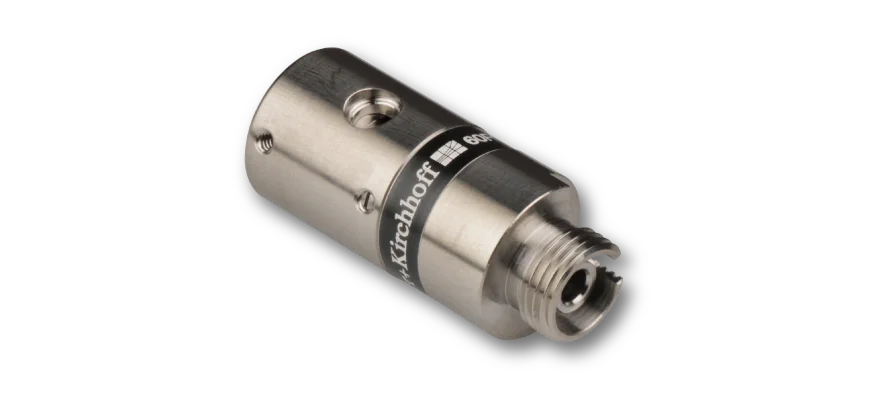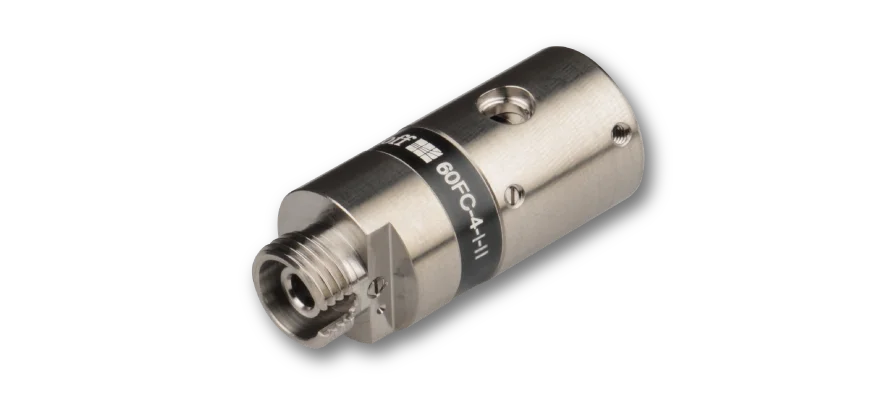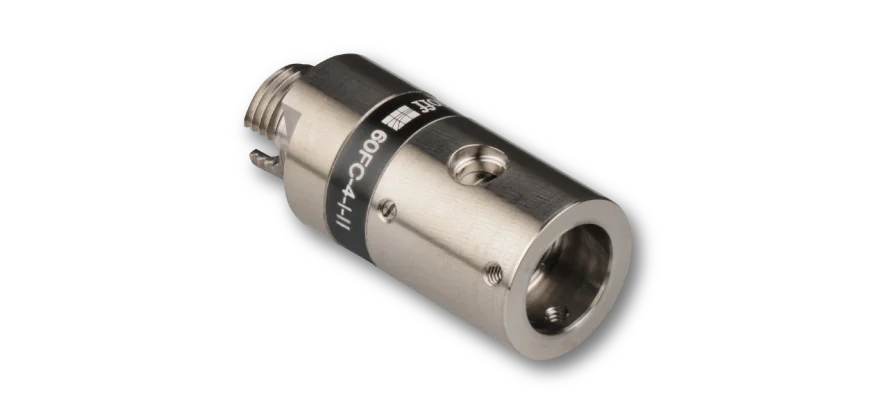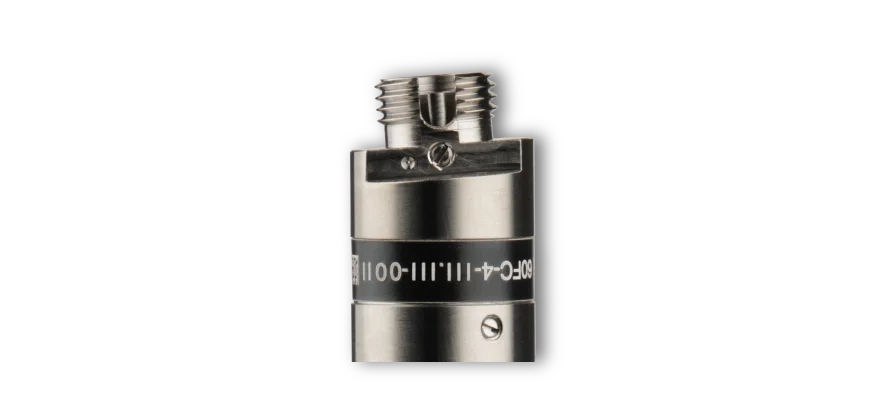The fiber collimators series 60FC is designed for collimating radiation
exiting optical fiber cables with high pointing stability. They can also be used
in reverse-mode as fiber incouplers. They are suitable for single-mode and
polarization-maintaining fiber cables leading to collimated beams with a Gaussian
intensity profile.
The features of the coupler type 60FC include:
Optics
The
achromat
with focal length 10 mm is designed for collimating multiple wavelengths.
It is AR-coated for 400 - 700 nm.
It is corrected for spherical aberrations and designed to be diffraction-limited
over a wide spectral range. That means that it leads to a diffraction-limited beam
with an M2 < 1.05 if combined with typical high-quality single-mode fibers.
Additionally, it is corrected for chromatic aberration so that there are certain
wavelengths or wavelength ranges where the focal length does not vary significantly.
It is not suitable for UHV applications.
Adjustment of focus
The distance between fiber end-face and collimating optics is adjusted by means
of an eccentric key. The lens does not rotate when adjusting the focus. The final
focus setting is locked by means of two radially arranged clamping screws.
Additionally, attachment optics of series 60FC can be mounted to the
front of the collimator.
Optimum lens performance
The angled polish of connectors of type APC is considered by a
pre-angled mechanical coupling axis that compensates the beam deflection and
you can use the lens centrically. This minimizes aberrations simply resulting
from a non-ideal beam path through the lens.
Connector Type
The fiber collimator is equipped with a FC-APC type receptacle.
Because of the spring-loaded fiber ferrule the fiber collimator has an additional grub
screw to increase pointing stability.
Material
The fiber collimator type 60FC is made from amagnetic titanium. The relative
permeability is near 1 (µr = 1.00005) making it almost transparent to magnetic fields.
The linear coefficient of thermal expansion is close to that of the optics so that a
thermal stability over a larger temperature range can be expected.
Mounting
The collimator can be placed into a standard mirror mount using the corresponding
adapters.
